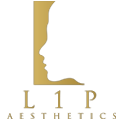In order to have the Best Results from you procedure as well as a smooth cosmetic experience, it is essential that pre and post treatment care is followed carefully.
-
Girl’s/Lad’s Night out Is Included in the Medical History
It may seem unlikely to affect your treatment; however alcohol is a large contender to bruising. A bruise, also known as a ‘contusion’ or ‘ecchymosis,’ it is a small haemorrhagic spot that results from extravasation of blood; it is found in the skin or mucous membrane and presents as a non-elevated, rounded or irregular, blue or purplish patch. As a doctor at L1P I would take a full medical history, with particular reference to previous treatments and susceptibility to bruising, hematological and liver disease, coagulopathies, and medication, including prescribed and over the counter. You may have previously been to a clinic where this may not have been the case, however as doctors at L1P we ensure that all areas of your medical history are covered to reduce susceptibility to reactions and interactions or increased risk to health with treatment. During the consultation we also enquire about Alcohol. This is because Alcohol increases clotting time and increases risk of bruising. Patients should avoid alcohol 24 hours pre and post treatment. As well as this, patients who are malnourished may be in a higher risk group; vitamin C deficiency and iron deficiency increases risk of bruising and prolongs healing time.
-
Avoid those hangover pills where possible

Many prescribed medications, such as aspirin, clopidogril, warfarin, non-Vitamin K-dependent oral anticoagulants (e.g., dabigatran, apixaban, and rivaroxaban), heparin, and the low molecular weight heparins all affect blood clotting and will increase the risk of haemorrhage and bruising. These medications should not be stopped without specialist advice and should not be discontinued for an aesthetic procedure. If aspirin is being taken as analgesia, this should be avoided for one week prior to the treatment being performed. Similarly, non-steroidal anti-inflammatory (NSAID) medications,(e.g., ibuprofen, naproxen, diclofenac, celecoxib, and meloxicam) should be avoided for a similar period of time. Corticosteroids will also increase the risk of bruising as they increase the fragility of capillaries within the skin. If a patient is taking a prescribed medication, the risks and benefits of the procedure should be discussed prior to consent being obtained. If a patient decides to proceed, they should be counselled about the increased risks.
-
Remove the Makeup Girls

Your Practitioner SHOULD have a good knowledge of venous and arterial vessels of the face to avoid puncturing larger vessels. This means that we should careful inspect the skin with all make-up removed. Once this is done any superficial vessels can be visualised and hence avoided. Lighting is important in any clinic enabling visualisation of underlying vessels. Visual aids, such as a magnifying loupe, are used at our clinic in certain instances offering a greater advantage. At L1P we also ensure the room is at an optimum temperature so the patient is not too hot. This ensures minimal vasodilation during the procedure
-
Reduced activity but not straight to bed

The patient should be positioned correctly. This helps reduce bruising post treatment by decreasing the unnecessary movement during treatment. The ideal patient position is semi-reclined at a 30-degree angle with the head supported by a head rest. Please be aware that if you do have a mobile practitioner that they have somewhere to position you correctly. Walking and normal daily activities can be resumed immediately after Anti Wrinkle injections, as long as an upright position is maintained for at least 4 hours. However, you should not go running or workout for 24 hours after treatment. This includes yoga—especially inversions. External pressure should not be applied to the area treated with Anti Wrinkle injections for at least 4 hours. We cannot stress the avoidance of external pressure post treatment enough. External pressure to the area can cause ptosis (drooping of the eyelid). The practitioner would have carefully placed the Anti Wrinkle injections to avoid this from happening however the product can be moved to a different area with just rubbing eyes/ eyebrows etc.
-
Do not go straight for the ice pack

All extreme temperatures should be avoided for AT LEAST 24 hours post procedure. Hot and cold compressions are not ideal in any given instance. As well as this Sun beds, holidays in the sun or snow should also be avoided for the 24 hour period. At L1P we advise that extreme temperatures are avoided for at least 24 hours, unless swelling and redness persists, in which case we advise to refrain until they have settled.
